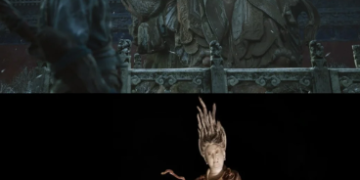Introduction: A Comic Tale of Two Traditions
Let’s call a spade a spade—or, in this case, a rabbi a rabbi, and a legend a legend. The question “What does the Talmud say about Jesus?” is not just a theological riddle, it’s a wild ride through centuries of legend, misinterpretation, scholarly debate, and yes, a healthy dose of comic confusion. Jesus, the world’s most famous Jew, looms large in Christian theology but casts a rather peculiar (and sometimes hilarious) shadow in classic Jewish texts like the Talmud. So, grab a seat and maybe a kosher snack as we unpack how the Talmud—and rabbinic Judaism—treats this famous Nazarene.
Jesus and the Case of Historical Mismatch: Talmudic Legends or Bizarre Fanfiction?
First things first: The Talmud is not a biography, Netflix series, or ancient tabloid dedicated to Jesus. What we encounter are scattered mentions, legendary tales, and, occasionally, jabs that historians have spent years trying to piece together. For instance, in Sanhedrin 107b, there’s a story about Jesus being a disciple of Rabbi Joshua Ben-Perahiah. Minor hiccup: That rabbi lived about a century before Jesus was born. Chronological confusion or rabbinic time travel? Most scholars chalk this up to creative storytelling, not legitimate history; as Professor Avigdor Shinan dryly noted, it’s “chronologically impossible.”
As for legends, we’re told that Jesus was allegedly involved in witchcraft, attempted to sway the Israelites from their God, and studied dark arts in Egypt—plotlines that wouldn’t be out of place in a Harry Potter spinoff. While these stories are amusing, they lack historical support and seem more like ancient efforts at distancing Christian claims from Jewish orthodoxy than actual reports. The rabbis, tasked with defending Jewish boundaries after Christianity branched off, clearly decided to add a dash of drama—and a heaping spoonful of chronological mishaps.
Did the Talmud Really Mean Jesus? Or Was It Balaam, Yeshu, or Somebody Else Entirely?
Here’s where it gets fun: Researchers, both Jewish and Christian, have often tried to decode whether certain villainous figures in the Talmud are sly references to Jesus. The prime suspect? Balaam—the biblical baddie best known for talking donkeys, sorcery, and really poor career choices.
Some passages gloat rather darkly about Balaam’s age at death (thirty-three or thirty-four—coincidentally about the age Jesus supposedly died), while others mention hellish punishments reserved for Balaam and a character called “Yeshu.” This sparked theories that Balaam was a secret codeword for Jesus. But, as modern scholars gleefully point out, the evidence is thinner than unleavened matzah. The passages heap villainy on Balaam clear as day; they also appear to mention Jesus (Yeshu) separately. You can’t have Balaam moonlight as Jesus in one passage and then introduce them both at the same time elsewhere. As some historians quip, “You can’t have it both ways!”
Moreover, early rabbinic literature is notorious for using variants of names and legends. The Talmud isn’t exactly a stickler for chronological and biographical precision. Some texts even claim Jesus suffered in hell, submerged in boiling excrement—a detail that, while memorable, reads more like comedic overkill than philosophical critique. Whether or not Yeshu in the Talmud is the Gospel Jesus is hotly debated. Some argue he’s a proto-Christian sectarian from the pre-Christian era; others say it’s a composite legend.
Of Bastards, Harlots, and Miraculous Healers: Talmudic Shade or Misunderstood Satire?
Talmudic texts occasionally lob accusations at Mary (Jesus’s mother), calling her names you wouldn’t use at family dinners. Yebamoth 49b and Sanhedrin 106a reference her in unflattering terms, but academic consensus says these passages are, at best, doubtful and probably not referring to Jesus at all. Most likely, these remarks are part of broader polemics, not biographical slander.
Then there are the miracle stories, like Jacob of Sechania healing in Jesus’s name. In one anecdote, a rabbi would rather let his nephew perish from a snakebite than accept a Christian-style healing. Talk about dedication to religious boundaries! These stories, while somber, are told in the Talmud with a certain dramatic flair—you can imagine ancient rabbis debating whether to accept miraculous help or prefer their theological purity, all while balancing a healthy dose of skepticism.
The Big Picture: Rejection as Core Value or Cautionary Tale?
In the grand scheme, the Talmud’s attitude can be summed up as: “Jesus? Not our guy.” Rabbinic Judaism solidified its identity, in part, by drawing firm boundaries against the claims of Christianity. Declaring Jesus a “false Messiah” became a theological pillar. Fast-forward two millennia, and you still find prominent rabbis quipping that “a Jew can believe in Jesus as much as a vegetarian can enjoy a steak.” (Spoiler: they can’t, unless it’s tofu.)
Ironically, while Jesus is largely rejected—sometimes with comic exaggeration—the underlying narratives remind us he was himself Jewish, as were his earliest followers. The New Testament was written by Jews, about Jews, in a land central to Jewish tradition. Meanwhile, the Talmudic world developed far away in Babylon and contained very different concerns and sensibilities. In short, the rabbinic rejection of Jesus has more to do with religious identity formation than biographical truth.
Scholarly Shrug: So, What REALLY Does the Talmud Say?
If you expected the Talmud to give a final answer—think again. Most modern academics agree: There’s little reliable, direct mention of Jesus of Nazareth. Johann Maier and Louis Ginzberg, among others, argue the Mishna and early rabbinic materials lack authentic references. The supposed codewords and secret identities just don’t stand up under scrutiny—a bit like looking for the Loch Ness Monster in a bathtub.
What does emerge are legends, polemics, and dramatic cautionary tales. Jesus sometimes functions rhetorically—as a warning, an outsider, or an anti-model. But on the whole, the Talmud doesn’t really say much about the historical Jesus. Where it does, it’s often by way of parable, legend, or theological boundary-marking—with more humor and hyperbole than anything resembling sober biography. If you’re looking for an actual rabbinic take on the Nazarene carpenter, you’ll find more smoke than fire—and plenty of rabbinic punchlines along the way.
Conclusion: The Talmud’s Jesus—A Legend, A Boundary, or Just a Jewish Punchline?
So what does the Talmud say about Jesus?? Perhaps more than you expect—and less than you imagine. Between epic legends, accusations, miracle tales, and more than a few chronological bloopers, the answer is as much a reflection of centuries-old Jewish-Christian dialogue (and rivalry) as it is of any real man from Nazareth. If nothing else, the Talmudic stories give us something to chuckle about—and maybe, just maybe, a deeper appreciation for the ways religion, legend, and humor have danced together across history’s stage.




























